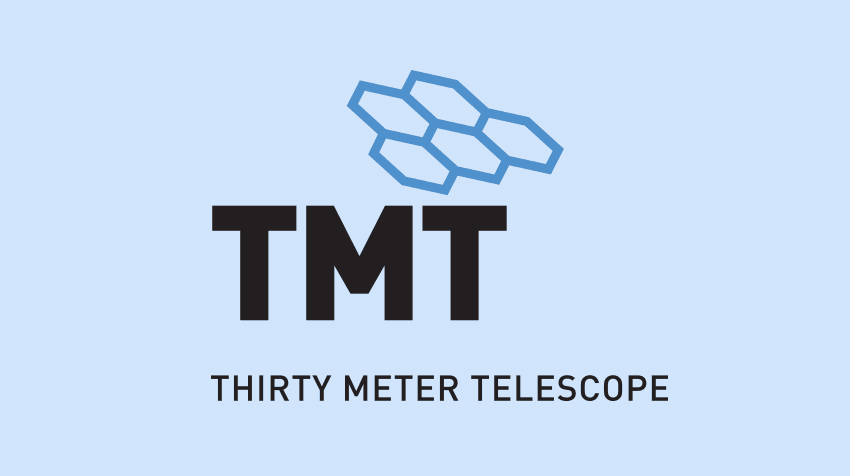

Pasadena, CA – TMT’s Science Advisory Committee (SAC), which has been meeting bi-monthly since the start of the Covid-19 pandemic, recently met to address the project status, its scientific potential and suitable instrumentation.
The SAC is composed of representatives from each TMT partner who advise the Project on TMT’s design, strategies and operational matter that can have a significant impact on TMT science.
TMT is partnering with the Giant Magellan Telescope (GMT) and NSF’s National Optical-Infrared Astronomy Research Laboratory (NOIRLab) to establish the US-Extremely Large Telescope Program (US-ELTP). TMT and GMT SAC members opened regular channels of communications and have already held two virtual joint SAC meetings since April 2020.
The US-ELTP was presented last year to an Astro2020 Decadal Survey panel of experts and all US-ELT partners are now eagerly awaiting the public release of the Astro2020 report, which will lay out the US priorities in the field of ground- and space-based astronomy for the coming decade. If approved, the US-ELTP will provide 25 percent (or more) of observing time to the US astronomical community on each of these two extremely large facilities, to address the most compelling and challenging research questions in astrophysics.
Gordon Squires, TMT VP for External Relations, reported on US-ELTP preparations for the release of the Astro2020 report. Also discussed was the role that TMT SAC can have in engaging TMT’s community of future users and designing competitive TMT and US-ELTP programs.
Another discussion was led by Mark Dickinson of NOIRLab, who gave an update on the US-ELTP user services that are being discussed for future development and would be provided to all TMT (and GMT) partners throughout the entire scientific data life cycle. The scientific data life cycle starts with an investigator preparing to submit an observing proposal (or an archival researcher starting with data discovery) and ends with reduced, science-ready data products that have been published in a peer-reviewed scientific journal. The US-ELT Program Platform (UPP) could host the services and tools that NOIRLab will provide to the US-ELTP. The three organizations – NOIRLab, GMT and TMT – are currently holding regular joint technical meetings and workshops to define the scope of UPP through the elaboration of use cases, operational concepts, science requirements and the design of the corresponding functional architecture.
TMT’s Design of Operations (DEOPS) and System Engineering (SEN) teams have been actively working with NOIRLab and GMT on the definition of US-ELTP operations concepts. “The goal is to define the optimal set of services that will support TMT and GMT users through all phases of science observations, from proposal submission/evaluation process (phase 1), preparation/execution of the science programs (phase 2), to archive with science data-access and data-reduction (phase 3),” said Christophe Dumas, DEOPS Group Leader.
The DEOPS team is updating TMT Operations Plan with a strong emphasis on service mode observing and the implementation of an adaptive scheduling (based on weather conditions at the Observatory) right from the start of steady-state operations. Discussions about data science policies will be defined in the near future by TMT partners, such as a schedule to release data to the general public after expiration of their proprietary period, or the implementation of a fast-track proposal submission.
It will be the role of the TMT’s SAC subcommittee on Operations to keep all TMT partners informed on the evolution of TMT operations and collect partners’ feedback about these new services in a timely manner. The subcommittee on Operations is a unique communication channel between TMT partners and the TMT project regarding the science support services being designed.
Gelys Trancho, TMT SEN Group Leader, covered the update and changes made to TMT operational and science requirements documents. Over the past few months, a team of TMT scientists and engineers re-evaluated the Observatory requirements document with the aim of verifying and simplifying these requirements, and ultimately consolidated several TMT foundation documents.
Other presentations addressed observational domains in which TMT will have a major scientific impact. Progress on the TMT Exoplanet subcommittee activities was reported by Norio Narita, Japan delegate on the TMT SAC. For nearly a year, members from each TMT partner have been discussing the science cases and instrumental capabilities needed to deploy a competitive exoplanet science program at TMT. The Exoplanet subcommittee collected inputs from more than 50 exoplanet experts across the partnership, which will help the prioritization of the scientific and instrumental capabilities (such as medium/high-spectral resolution, high-contrast imaging, or a combination of both) needed to characterize giant and Earth-like planets, including habitable ones. Instrument concepts for TMT next-generation exoplanet instruments include the Planetary System Instrument (PSI), Mid-IR Spectrometer Imager (MICHI), and High-Resolution Optical Spectrometer (HROS). However, exoplanet science will be supported as early as first-light thanks to MODHIS, TMT’s fiber-fed high-resolution infrared spectrograph.
Lastly, the meeting covered the organization of the next TMT Science Forum, which will be held on the beautiful campus of the British Columbia University in Vancouver, Canada, on June 26-30, 2022. The Forum organizers are planning to reserve a morning session to showcase First Nations Astronomy, with presentations reporting on the contributions to Astronomy made by the First Nations community in Canada.
“The next TMT Forum will be a very important event. It will come after many months of worldwide disturbances caused by the Covid-19 pandemic, and after the release of the Astro2020 decadal report,” said Timothy Davidge, astronomer at the National Research Council of Canada, representing Canada on the TMT SAC. The Science and Local Organizing Committees will be set up over the next few months to help in the preparation of the event and encourage the entire TMT science community to actively participate in the next science Forum.
First M1 Roundels Produced by Coherent for TMT Successfully Shipped to Storage Facility in California
Progress made on TMT mirror production